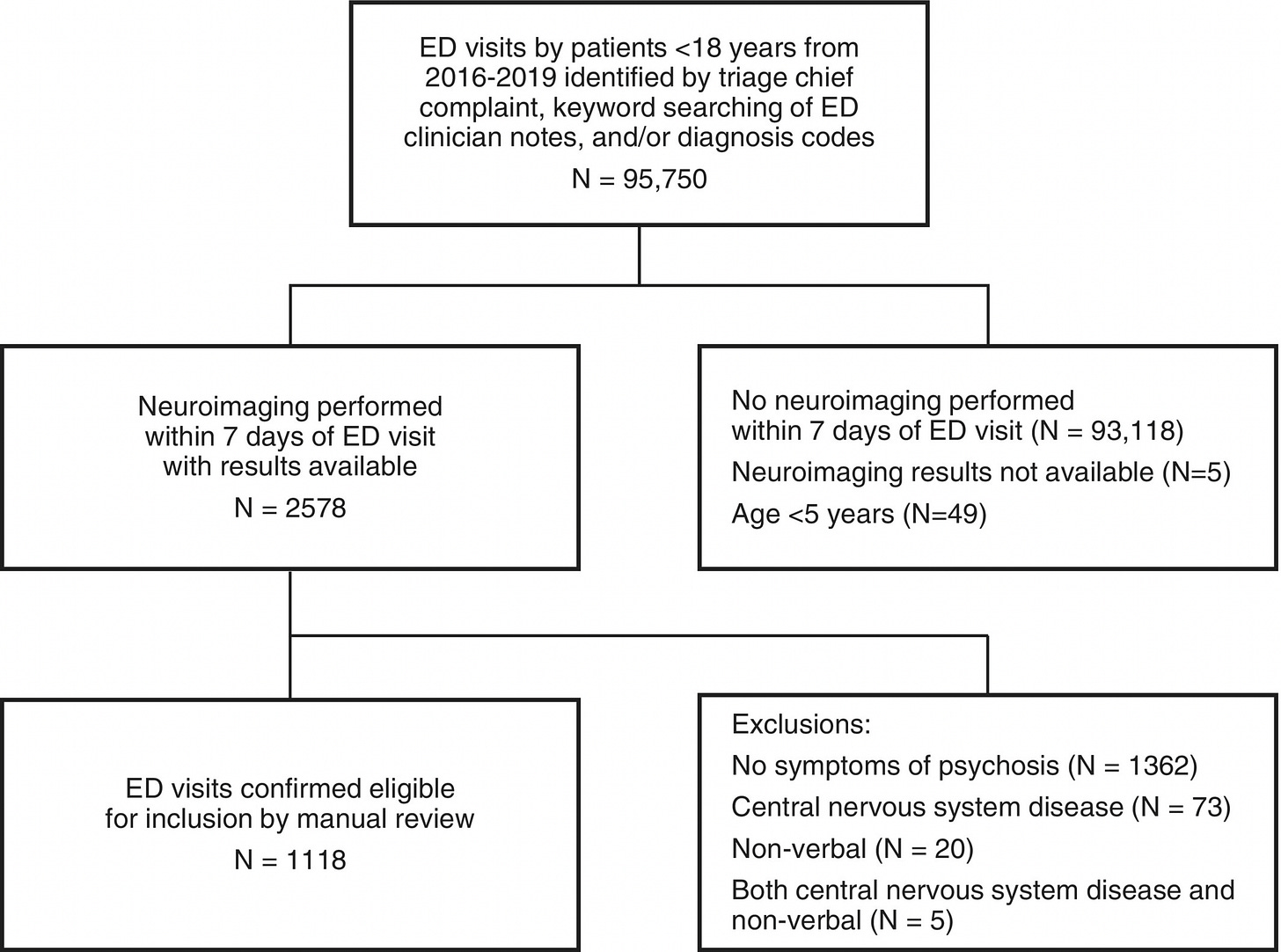Let's Overstate Abnormal Neuroimaging In Pediatric Psychosis
As high as 1 in 20 – or, it's all in the framing.
When a study with surprising results spends most of its discussion recounting the ways in which their work differs from prior publications, that ought to be an important clue regarding interpretation.
This little study took a retrospective look at children presenting to emergency departments with signs and symptoms of psychosis, and then combed more deeply into the neuroimaging findings for these patients. They identified 1,118 children who underwent 1,325 neuroimaging studies, and lo:
In this multicenter retrospective study of children and adolescents presenting to the ED with symptoms of psychosis who had neuroimaging obtained, approximately 1 in 20 ED visits had clinically significant neuroimaging findings, prompting further testing, treatment, or medical admission. Among visits in which patients had no signs or symptoms that might independently prompt neuroimaging, only approximately 1 in 50 visits had clinically significant neuroimaging findings.
As you can readily imagine, this quote – taken out of context – has a great deal of potential to be anxiety-provoking or inadvertently practice-changing.
However, a quick look at their study design shows this conclusion does not have nearly the sweeping implications it might imply:
The vast majority of children initially identified by their behavioral diagnosis codes did not undergo neuroimaging. Therefore, their “1 in 20” estimate is, realistically, a “1 in 750” right off the bat. Then, inspection of their Supplemental Content clearly demonstrates they have taken the most expansive possible view, with even the most non-specific of MRI findings potentially “clinically significant” by their definition. Finally, many children in their cohort presented with characteristics clearly requiring neuroimaging, rather than non-specific behavioral disturbance.
Stick with the prior literature, rather than this one; the number of clinically important missed neuroimaging findings in pediatric psychosis is measured on the order of one in tens of thousands.

